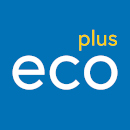
Microplastics in Food
Issue
Microplastics (plastic particles with a diameter of less than 1 millimeter) are a major source of plastics entering the environment. A distinction must be made between primary microplastics, which are plastic particles that are used specifically for the manufacture of products, for example in the cosmetics and hygiene sectors, and secondary microplastics, which result from the degradation of larger plastic parts. How much of it is in which foods? And how did it get in there?
Approach
These questions are addressed in the research project “microplastic@food”, which is funded by the Research Promotion Agency (FFG) as part of the CORNET program. Companies in the packaging, food and beverage industry, together with the OFI (Austrian Research Institute for Chemistry and Technology) and other scientific partners from Austria and Germany, examine the problem in several case studies and develop appropriate analytical methods:
- Hard packaging (such as yoghurt cups, bowls and bottles), transport boxes and flexible films and hoses in bottling plants are sources of microplastic input
- Comparison of different packaging materials (glass, plastics, composites) for water and beverages over the life cycle of the bottled good: How many plastic particles does the liquid contain before filling? What comes from the filling process, the sealing process, the storage in the packaging and from opening and resealing?
- The microplastic load on the surface of chunky foods such as meat, sausage, fish, hard cheese or tofu. This is determined by a quantitative rinsing process of the food surfaces, subsequent filtering of the rinsing water and analysis of the filters.
- The accumulation of microparticles on the surface or in the intergranular volume of powdery foods soluble in water and other soluble foods such as sugar, salt, etc.
Result
The project will run until 2023. When the project is over, it should provide clarity about how much of which type of microplastic is present in food from domestic manufacturers as well as its sources. The quantification of microplastic particles in different foods can be the basis of a risk assessment that can be used to develop a catalogue of measures to prevent the introduction of plastic particles.
Contact
Food Cluster of Lower Austria
Magdalena Resch
+43 664 601 19673
